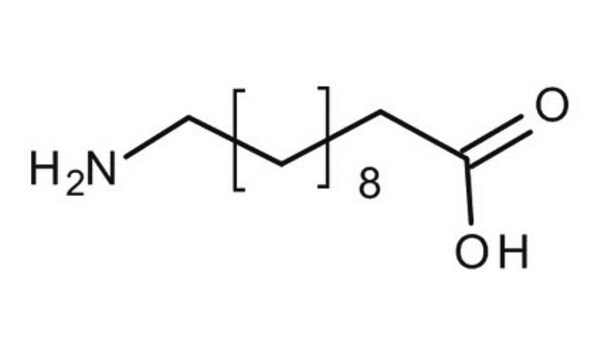P0084
Monoclonal Anti-Pinin antibody produced in mouse
~1.5 mg/mL, clone 5F1, purified immunoglobulin, buffered aqueous solution
Synonym(e):
Anti-DRS, Anti-PNN, Anti-SDK3, Anti-memA
About This Item
Empfohlene Produkte
Biologische Quelle
mouse
Konjugat
unconjugated
Antikörperform
purified immunoglobulin
Antikörper-Produkttyp
primary antibodies
Klon
5F1, monoclonal
Form
buffered aqueous solution
Mol-Gew.
antigen ~140 kDa
Speziesreaktivität
monkey, bovine, human, canine
Verpackung
antibody small pack of 25 μL
Konzentration
~1.5 mg/mL
Methode(n)
immunocytochemistry: suitable
indirect ELISA: suitable
western blot: 1-2 μg/mL using HeLa nuclear cell extract
Isotyp
IgG1
UniProt-Hinterlegungsnummer
Versandbedingung
dry ice
Lagertemp.
−20°C
Posttranslationale Modifikation Target
unmodified
Angaben zum Gen
human ... PNN(5411)
Allgemeine Beschreibung
Spezifität
Immunogen
Anwendung
- enzyme-linked immunosorbent assay (ELISA)
- immunoblotting
- immunocytochemistry
Biochem./physiol. Wirkung
Physikalische Form
Lagerung und Haltbarkeit
Haftungsausschluss
Sie haben nicht das passende Produkt gefunden?
Probieren Sie unser Produkt-Auswahlhilfe. aus.
Ähnliches Produkt
Analysenzertifikate (COA)
Suchen Sie nach Analysenzertifikate (COA), indem Sie die Lot-/Chargennummer des Produkts eingeben. Lot- und Chargennummern sind auf dem Produktetikett hinter den Wörtern ‘Lot’ oder ‘Batch’ (Lot oder Charge) zu finden.
Besitzen Sie dieses Produkt bereits?
In der Dokumentenbibliothek finden Sie die Dokumentation zu den Produkten, die Sie kürzlich erworben haben.
Unser Team von Wissenschaftlern verfügt über Erfahrung in allen Forschungsbereichen einschließlich Life Science, Materialwissenschaften, chemischer Synthese, Chromatographie, Analytik und vielen mehr..
Setzen Sie sich mit dem technischen Dienst in Verbindung.




